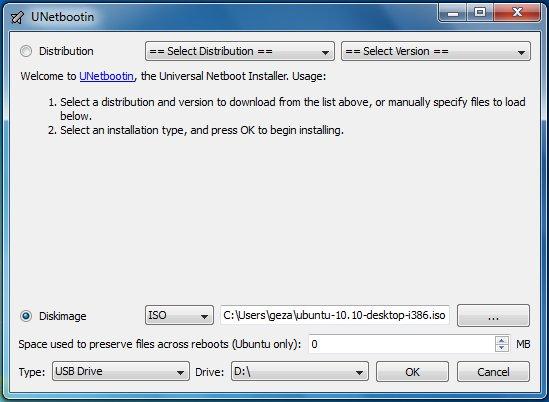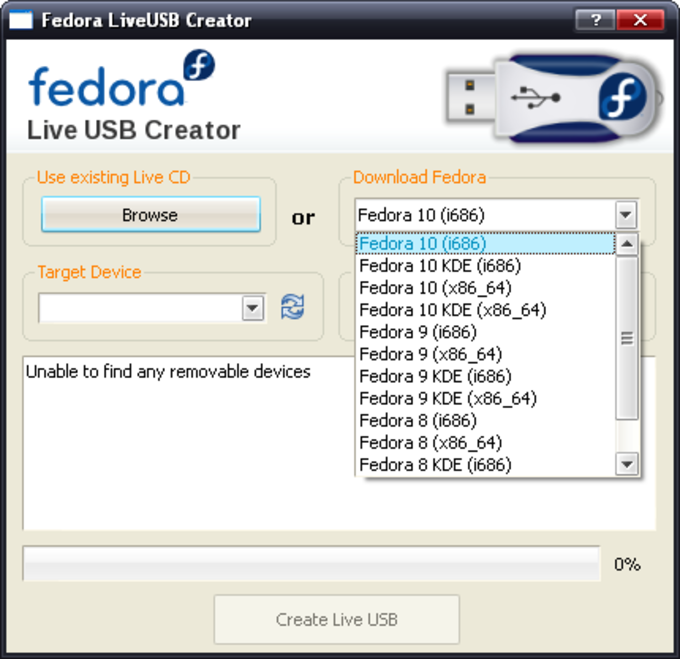

- #FEDORA LIVE USB CREATOR DOWNLOAD FOR WINDOWS MAC OS X#
- #FEDORA LIVE USB CREATOR DOWNLOAD FOR WINDOWS INSTALL#
- #FEDORA LIVE USB CREATOR DOWNLOAD FOR WINDOWS PC#
- #FEDORA LIVE USB CREATOR DOWNLOAD FOR WINDOWS ISO#
#FEDORA LIVE USB CREATOR DOWNLOAD FOR WINDOWS MAC OS X#
In order to ensure that the package you downloaded is the correct one, Fedora LiveUSB Creator automatically verifies its checksum to before installing it on your USB device.Īfter this process is completed, you will be able to use your removable USB stick to boot your computer whenever your host OS is causing problems. UNetbootin is a free program for both Windows, Linux, and Mac OS X that allows you to create bootable Live USB drives for Ubuntu, Fedora, and other Linux distributions instead of burning a CD.

Verify the OS checksum before creating the Live USB

The utility supports several releases, such as various editions of Fedora 16, 17, 18 or Sugar on a Stick, so you need to select the one you are interested it and start the download process. On the other hand, if you do not have a Live CD or you want to use a certain version of Fedora, you can just download it from the Internet.
#FEDORA LIVE USB CREATOR DOWNLOAD FOR WINDOWS INSTALL#
Download a Fedora edition to install on your Live USB Note: The picture shown above has 'Fedora 10' selected, we are using Fedora 16. When it is done, it will look like the picture shown below. Once Fedora Media Writer is installed, it will set up your flash drive to run a 'Live' version of Fedora Workstation, meaning that you can boot it from your flash drive and try it out right away without making any permanent changes to your.
/001-create-bootable-fedora-usb-drive-2202081-b71cb5389ca14cc88e0ee7207ae42d66.jpg)
#FEDORA LIVE USB CREATOR DOWNLOAD FOR WINDOWS ISO#
The easiest and quickest way to build your own custom Live USB running a specific flavor of Fedora is to use a Live CD that you, or one of your friends, previously created.īasically, you need to browse to the location of your ISO file, load it within the application, adjust the level of persistent storage, then press the dedicated button and wait until your Live USB gets processed.īy adjusting the persistent storage value, you can allocate additional space on your USB drive so as to save files and make changes to the OS that are stored after restart. Create Live USB - Click it and watch it do it's magic. All you need is a 2GB USB flash drive, and Fedora Media Writer. Create a Live USB with Fedora using an existing Live CD Fedora LiveUSB Creator is one of the applications that help them create such devices.
#FEDORA LIVE USB CREATOR DOWNLOAD FOR WINDOWS PC#
Once we have the pendrive prepared, we'll only have to turn on a PC with the BIOS configured to start from the USB with the USB pendrive connected, and Fedora will start.Linux is a very popular operating system due to the fact that it is open source but also because it provides users with a great degree of flexibility that other OSes do not offer.Īdditionally, it is the go-to platform for Windows users when their computer breaks down and they can no longer access their files since it can be run off a Live CD or USB. This software, that's compatible with the majority of versions of Fedora, once launched like any Windows application will ask you to input a CD or DVD with the Linux distribution and to connect the USB flash drive, after this, it will allow us to choose the size that we'll dedicate to the Linux distribution on our pendrive. So with Fedora Live USB Creator we'll obtain a brilliant assistant that will help us in this task. With LiveUSBs it's possible to configure everything so that this doesn't happen. One of the drawbacks of using LiveCDs is that we can't record any data on the optical media, so each time that it's rebooted, the system will be the original one. Carry Fedora around with you wherever you go This is very useful to find out if everything works perfectly on our PC, but since the speed of USB units is higher, applications like Fedora Live USB Creator have been developed to allow the user to generate a LiveUSB of a Fedora distribution. The majority of Linux distributions can be launched in Live mode from a CD or DVD so that the users can try out the systems before installing them.


 0 kommentar(er)
0 kommentar(er)
